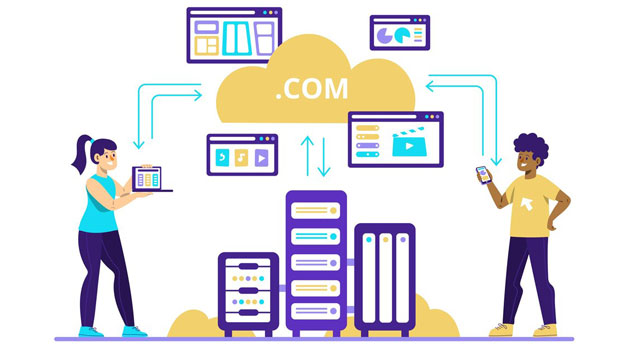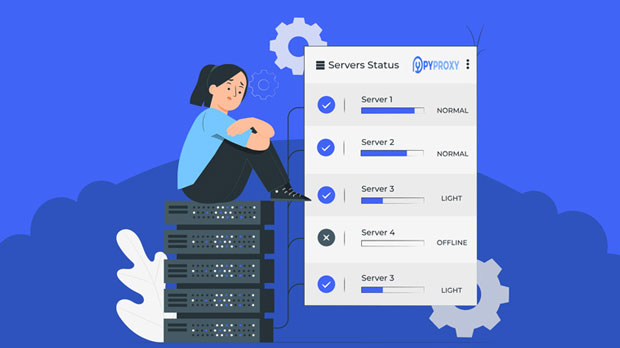Crawling proxies and regular proxies both serve as intermediaries between the user and the web, but they differ significantly in their function, application, and advantages. A crawling proxy is specifically designed for web scraping and data collection from websites. It helps businesses, researchers, and developers gather large amounts of data from multiple sources without getting blocked. On the other hand, regular proxies are more commonly used to hide users’ identities, bypass geographical restrictions, or maintain online privacy. This article will compare and contrast these two types of proxies, examining their individual roles, features, and applications to help businesses and individuals make informed decisions when selecting a proxy service. What is a Crawling Proxy?A crawling proxy is a specialized type of proxy designed for the task of web scraping and crawling. It allows users to extract large volumes of data from websites, bypassing various restrictions such as IP blocking or rate-limiting. Crawling proxies typically rotate IP addresses frequently to simulate a large number of users accessing the site, thus avoiding detection and blocking by the target server. These proxies are essential for businesses that need to collect data from numerous online sources, such as competitor pricing, product information, or customer reviews, without triggering security mechanisms like CAPTCHA or IP bans.What is a Regular Proxy?A regular proxy, in contrast, is generally used for anonymity and privacy purposes. It acts as an intermediary server between the user and the internet, masking the user's real IP address with the proxy's IP address. Regular proxies are primarily used to maintain online privacy, hide a user's physical location, or access geographically restricted content. They are commonly employed by individuals who want to browse the internet securely or by businesses looking to control access to certain websites. Regular proxies do not usually rotate IP addresses as frequently as crawling proxies and are not optimized for web scraping tasks.Key Differences Between Crawling Proxies and Regular Proxies1. Purpose and FunctionalityThe primary difference between crawling proxies and regular proxies lies in their purpose. Crawling proxies are designed specifically for web scraping, which involves the automated collection of data from websites. They are engineered to handle high volumes of requests and are optimized to avoid being detected by websites' anti-scraping mechanisms. On the other hand, regular proxies are used for a variety of purposes, such as privacy protection, bypassing geo-blocks, or controlling access to websites. They are not tailored for high-volume data extraction and may not be as effective at avoiding detection during web scraping.2. IP Rotation and Request FrequencyCrawling proxies typically rotate IP addresses at frequent intervals, sometimes even with every request, to simulate the behavior of multiple users. This helps avoid detection mechanisms like IP bans or rate-limiting. In contrast, regular proxies often use a fixed IP address or rotate IPs less frequently, making them suitable for tasks like browsing or accessing region-restricted content, but not ideal for large-scale scraping tasks that require fast, anonymous browsing.3. Speed and EfficiencyBecause crawling proxies are optimized for web scraping, they are built to handle multiple simultaneous requests efficiently. They often include features like proxy pools, where a large number of proxies are used in parallel to distribute the load, ensuring faster data collection. Regular proxies, while functional for individual or small-scale tasks, might not offer the same level of speed and efficiency when handling large-scale data scraping operations.4. Use CasesCrawling proxies are best suited for businesses or individuals involved in web scraping, data analysis, or research that require large amounts of data from various sources. They are commonly used in fields like market research, SEO monitoring, competitive intelligence, and price comparison. Regular proxies, however, are more commonly used for general browsing activities, such as maintaining anonymity, accessing blocked content, or securing web traffic.Applications of Crawling Proxies1. Web Scraping and Data MiningThe primary application of crawling proxies is in the field of web scraping and data mining. Businesses can use crawling proxies to extract valuable information from websites, such as product prices, customer reviews, or competitor data. This data can then be used to analyze market trends, monitor competition, or improve decision-making processes.2. SEO MonitoringSEO professionals often rely on crawling proxies to track search engine rankings, analyze keyword performance, and monitor changes in search engine algorithms. By rotating IPs and using multiple proxy locations, they can simulate search engine queries from different geographical regions and ensure accurate data collection without triggering anti-scraping measures.3. Price Comparison and Competitive IntelligenceCrawling proxies are frequently used in price comparison tools and competitive intelligence platforms. They allow businesses to collect real-time pricing data from competitors, analyze trends, and adjust their own pricing strategies accordingly.Applications of Regular Proxies1. Privacy and AnonymityRegular proxies are often used by individuals who wish to browse the web anonymously or hide their IP address. By masking their real IP, users can protect their identity and avoid tracking by websites, advertisers, or hackers.2. Accessing Geo-Restricted ContentRegular proxies are commonly used to access content that is restricted based on the user's geographical location. By connecting to a proxy server located in a different country, users can bypass geo-blocks and access content that would otherwise be unavailable in their region.3. Web Traffic ControlBusinesses use regular proxies to monitor and control web traffic within their networks. By routing traffic through a proxy server, they can filter content, prevent access to certain websites, and enforce security measures for their employees or customers.Which Proxy Should You Choose?The choice between a crawling proxy and a regular proxy depends on your specific needs. If you're engaged in web scraping, data analysis, or any task that requires the extraction of large amounts of data from multiple sources, a crawling proxy is your best option. Crawling proxies offer high-speed access, IP rotation, and resistance to anti-scraping measures, making them ideal for large-scale data collection.On the other hand, if your main concern is privacy, anonymity, or accessing geo-blocked content, a regular proxy may be sufficient. Regular proxies are more straightforward to use and can handle most general browsing tasks, but they are not optimized for large-scale web scraping operations.In summary, while both crawling proxies and regular proxies serve as intermediaries between the user and the internet, they have distinct differences in their functionality, applications, and performance. Crawling proxies are designed for high-volume data extraction and web scraping tasks, whereas regular proxies are more suited for maintaining privacy, accessing restricted content, and general browsing. By understanding these differences, businesses and individuals can select the appropriate proxy service for their specific needs, ensuring efficient and secure internet usage.
May 19, 2025






















































